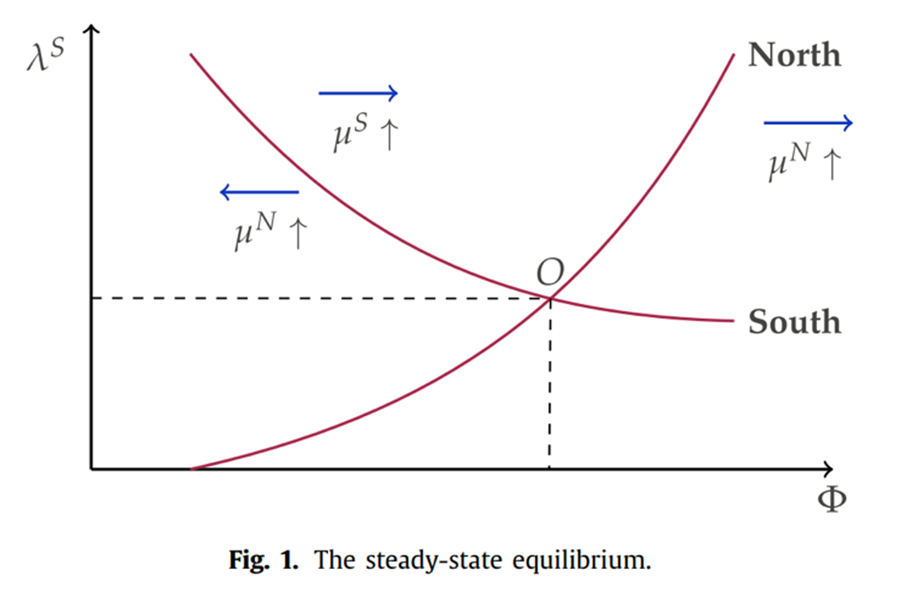
ABSTRACT
This paper analyzes the cross-country effects of intellectual property rights (IPR) protection on the relative wage, innovation, and technology transfer in a North-South quality-ladder model with innovative Northern R&D and adaptive Southern R&D. The degree of IPR protection in two countries differs in terms of patent breadth, which determines the markups of Northern firms and their Southern affiliates, respectively. In this model, stronger IPR protection in the South leads to a permanent decrease in the North-South wage gap, a temporary increase in the Northern innovation rate, and a permanent increase in technology transfer. By contrast, stronger IPR protection in the North leads to a permanent increase in the North-South wage gap, ambiguous effects on the Northern innovation rate, and a permanent decrease in technology transfer. Finally, we perform a quantitative analysis by calibrating the model to the US-China data, and the numerical results support these policy implications in addition to a welfare implication such that strengthening patent protection in one country leads to sizable welfare improvements in both countries.
KEYWORDS
Innovation, Intellectual Property Rights Protection, North-South Product Cycles, R&D, Technology Transfer
JCR CLASSIFICATION
Q2
JEL CLASSIFICATION
F43, O33, O34, O40
European Economic Review
https://doi.org/10.1016/j.euroecorev.2020.103531
